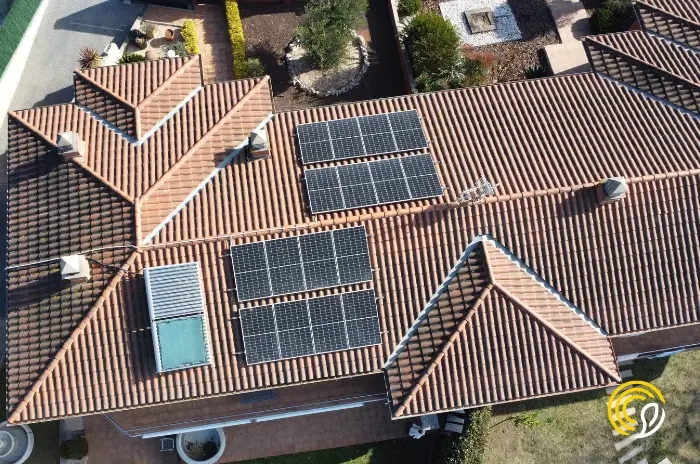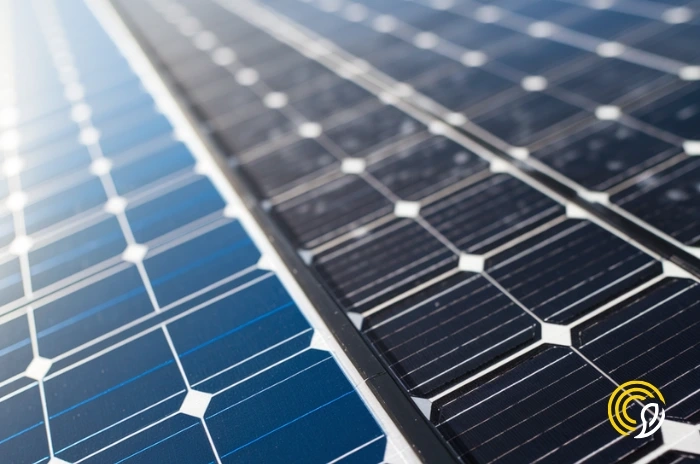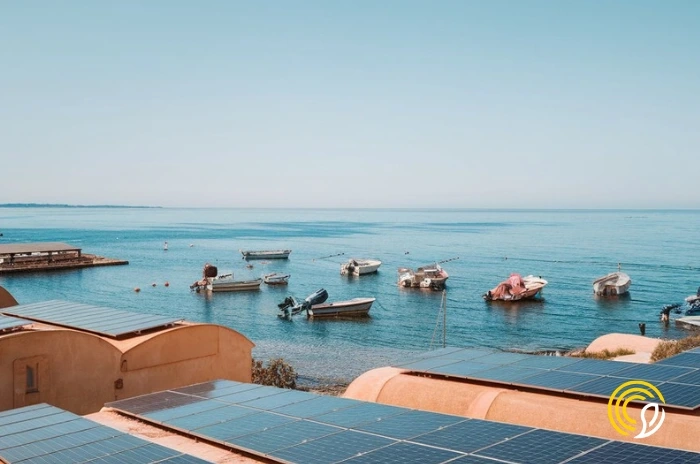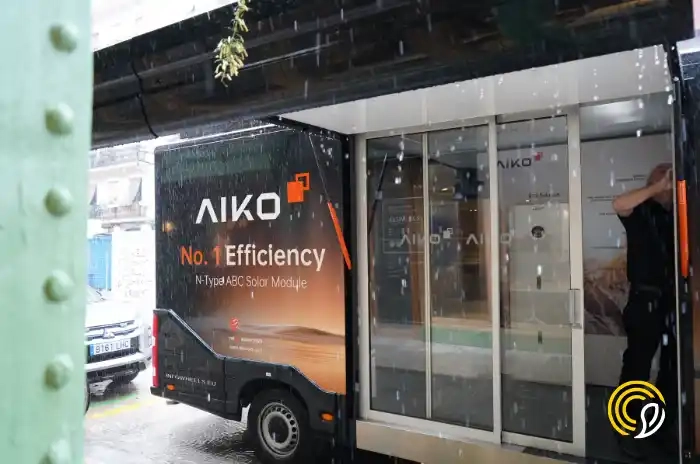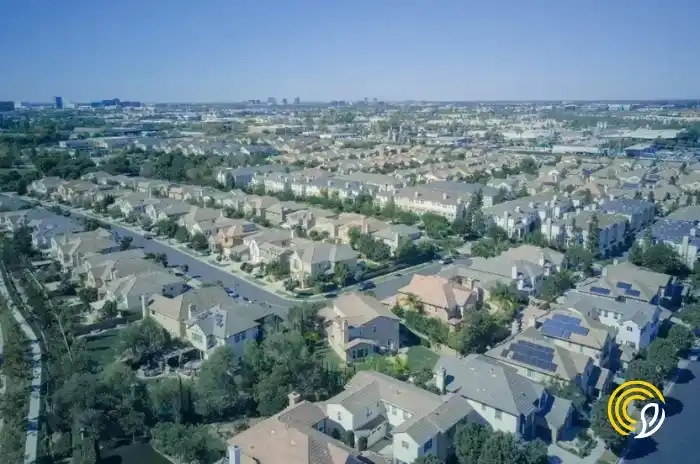
Solar panel measurement guide 2024

Claudia Pardo, Content Specialist at Sunhero and a firm believer that solar energy can transform the world.
11/10/2024
4 min read
Table of Contents
Choosing the right solar panels for your project is essential to maximize the efficiency and performance of a solar installation. The dimensions of solar panels vary depending on their use, whether residential, industrial, or for community setups, and these differences can influence their performance, cost, and ease of installation.
In this guide, we will review the most common solar panel sizes in 2024, the pros and cons of each type, and how to choose the right size for your solar installation.
Types of Solar Panels by Size and Use
Residential Solar Panels
The most common solar panels for residential use typically have dimensions of 1.65 m x 1 m and consist of 60 photovoltaic cells. These panels are designed to optimize the available space on rooftops, providing an ideal balance between size and performance.
- Pros: They are compact, allowing them to be installed on most residential rooftops. They offer good energy efficiency for medium-sized homes and are easy to handle and install due to their smaller size and lightweight (between 18 and 23 kg).
- Cons: Their energy generation capacity is lower compared to larger panels, which may require the installation of more units to fully meet a household’s energy consumption needs. This could also mean higher installation costs in the long run if multiple panels are needed to satisfy energy demand.
Industrial Solar Panels
Industrial solar installations use larger panels to maximize energy generation. These industrial panels typically have dimensions of 2 m x 1 m and consist of 72 photovoltaic cells or more. They are designed to cover large areas, such as factory roofs, warehouses, or industrial buildings.
- Pros: They offer a greater capacity for energy generation per square meter, making them ideal for meeting high energy demands. Their larger size means fewer panels are needed to generate a significant amount of energy, which can be more cost-effective for large-scale installations.
- Cons: These panels require more space for installation and are heavier, which can complicate the assembly process and increase installation costs. Additionally, due to their size, they may not be suitable for smaller or irregularly shaped rooftops.
Solar Panels for Community Setups
Community setups that share a solar installation often use customized configurations to optimize the use of the shared rooftop space. These configurations can vary depending on the size of the building and the number of residents involved, and they often use standard commercial panels with 72 cells or even larger.
- Pros: They provide an efficient solution to reduce shared energy costs and maximize the use of available rooftop space. Being community projects, the initial investment is divided among several owners, which lowers individual costs.
- Cons: Implementing a shared self-consumption system requires detailed planning and effective collaboration among all residents involved. Specific adjustments to the installation might also be necessary to ensure an equitable distribution of the generated energy.
How Dimensions Affect Performance, Cost, and Ease of Installation
The dimensions of a solar panel not only affect its energy generation capacity but also other important factors:
- Performance: Larger panels, like those used in industrial installations, are more efficient and can generate more energy per unit, making them ideal for meeting high energy demands.
- Cost: Although larger panels have a higher initial cost, the cost per kilowatt generated is usually lower, making them more cost-effective in the long run.
- Ease of Installation: Smaller, lighter panels, like residential ones, are easier to install and handle, which reduces installation costs and time.
Solar Panels Used by Sunhero
Sunhero takes a personalized approach to selecting the size of its solar panels, based on a detailed analysis of the available space, the client’s energy consumption, and local climate conditions. This method ensures that each customer receives the most efficient and cost-effective solution for their specific needs, optimizing performance and maximizing profitability. Here are the three solar panel manufacturers most commonly used by Sunhero.
Aiko Solar
Aiko Solar panels are known for their advanced ABC (All Back Contact) technology, which optimizes efficiency by placing all electrical contacts on the back of the solar cell. This design not only improves efficiency by reducing shading on the panel’s surface but also gives it a sleek, all-black appearance, ideal for residential installations where aesthetics are important. These panels offer a maximum efficiency of 22.1%, making them an excellent choice for homes seeking an efficient and compact solution.
Hyundai Full Black
Hyundai Full Black panels stand out for their elegant and uniform design, seamlessly integrating into modern residential rooftops. These panels have an efficiency range of 20.5% to 20.6%, utilizing PERC (Passivated Emitter and Rear Contact) technology to enhance light absorption and reduce energy losses in low-light conditions. The all-black design not only boosts aesthetics but also maximizes performance.
JA Solar 550
The JA Solar is designed for industrial and large-scale applications, with an output ranging from 525W to 550W. These panels are optimized to maximize energy production on large surfaces, making them an ideal choice for factories, warehouses, and high-demand solar projects. Their robust and durable structure allows them to withstand extreme weather conditions, ensuring stable and reliable performance over time.

Choosing the right dimensions for solar panels is essential to maximize the efficiency of your installation and achieve the best possible performance. From compact options for homes to high-capacity solutions for industries, it’s important to consider all factors to make an informed decision. If you need help determining the right size for your solar installation, don’t hesitate to contact the Sunhero team!
Ready to take the next step toward a sustainable future? Get in touch with us at Sunhero and receive a personalized assessment to find the perfect solar solution for your home or business.
Start today!
Fill out our free solar calculator and get a custom quotation






